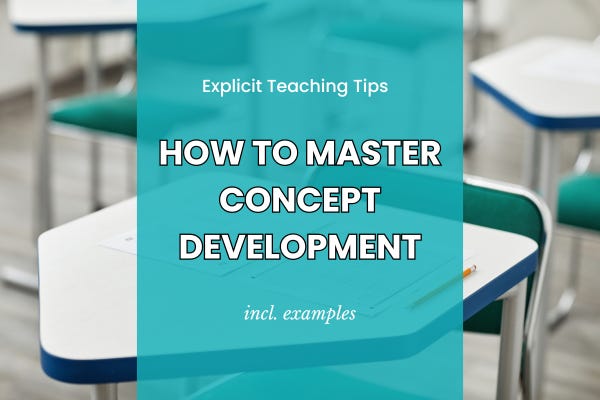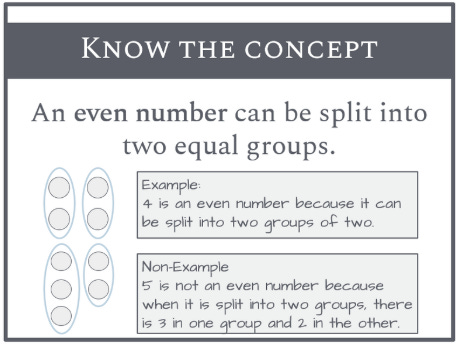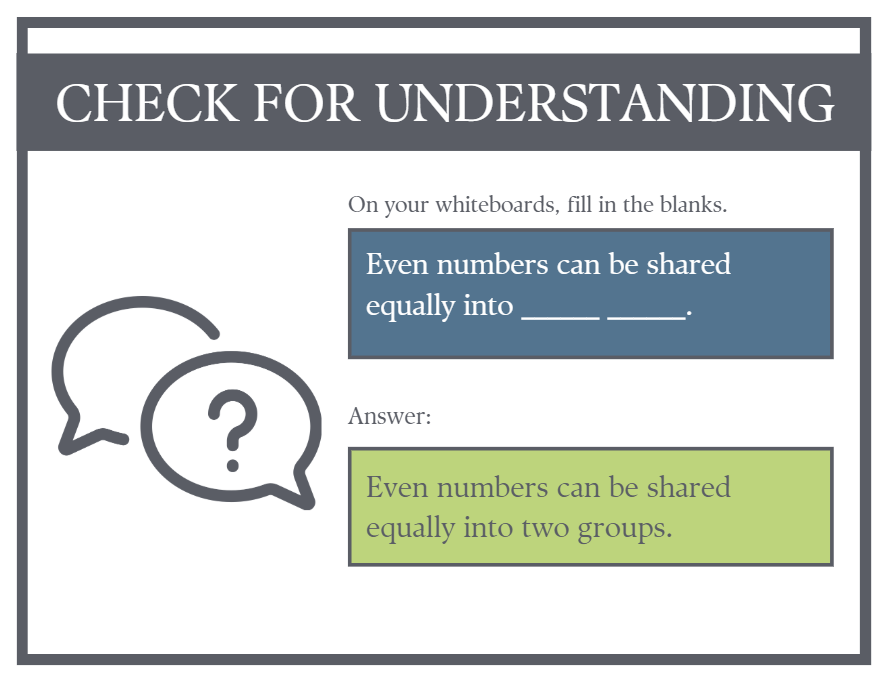How to Master Concept Development in Explicit Teaching
How to build students' concept knowledge with precise definitions and examples.
Too often, teachers rush to skill development before students have a solid grasp of the concepts. When this happens, the “I do, We do, You do” may lead to misconceptions. Students stumble not because they lack ability, but because they are trying to perform a skill without the language or conceptual understanding that underpins it.
The Difference Between Knowing and Doing
There is a clear difference between what students need to know and what they need to do.
Concept knowledge is the foundation: the terms, definitions, and examples that make sense of the skill.
Skill development is the application: the procedures and actions that build fluency.
When we teach skills without first building this foundation, we increase cognitive load and reduce the chances of long-term retention.
Building Concept Knowledge
Concept development comes first. Students need clear, concise definitions, examples, and non-examples.
Effective concept-building includes:
Clear and succinct definitions.
Key concepts in your learning objective must be defined in a clear manner. Keep it simple so students can understand.
But it is also important to build familiarity with academic language.
Examples and non-examples.
Use audio, images, videos, sample numbers, words or text to show instances that demonstrate the concept in use.
Include a range of examples from different contexts.
For non-examples, clarify misconceptions about the concept by including items that contain shared attributes with the concept (when teaching about improper fractions you can include mixed fractions as a non-example).
Quick checks for understanding.
Example quick checks:
“Teach a partner the definition in your own words.”
Sorting examples vs non-examples.
True or false questions with immediate feedback.
Here’s some examples:
Why Concept Development Matters
Concept development is the anchor of explicit teaching. Without a strong understanding of key terms and ideas, students are left trying to memorise steps or procedures without understanding the “why” behind them. This often leads to surface-level learning, errors in application, and a lack of confidence.
When students grasp the concept first, they can:
Connect new learning to what they already know.
For example, when teaching equivalent fractions, students who understand the concept of ‘same whole, different parts’ can see why 2/4 and 1/2 represent the same quantity, rather than just memorising number patterns.Recognise patterns and make sense of the skill steps.
In maths, understanding the concept of place value helps students see why adding 10 shifts digits rather than simply following a rule.Apply their knowledge flexibly in new situations.
When students understand the concept of ‘persuasion’ in English, they can identify persuasive techniques in both written ads and spoken debates.
What Happens When We Skip Concept Development
If we rush to skill practice without securing the concept, students may:
Rely on rote memorisation rather than meaningful understanding.
For example, students might learn to divide fractions by flipping and multiplying without ever understanding what division of fractions represents.Struggle to explain their thinking because they lack the language.
A student may know how to solve a maths problem but cannot explain it using terms like ‘numerator’ or ‘denominator,’ which are critical for deeper reasoning.Develop misconceptions that are harder to correct later.
For example, students might think that a square isn’t a rectangle because the distinction was never clarified during concept teaching.Lose motivation when they repeatedly make avoidable errors.
In writing, a student who doesn’t understand the parts of a ‘sentence’ will continue to string together phrases, feeling frustrated when corrections are made.
Where Concept Development Fits in the Lesson
In an explicit teaching sequence, concept development belongs immediately after introducing the learning intention, success criteria and activate prior knowledge but before any skill modelling or guided practice. This ensures that when students move to “I Do, We Do, You Do,” they are building on a foundation of clarity.
For example:
Learning intention & Success Criteria: What we are learning and how to achieve success.
Activate Prior Knowledge: Providing links to previously taught concepts & skills.
Concept development: Defining key terms, exploring examples and non-examples, and checking understanding.
Skill modelling: Demonstrating the procedure or process (I Do).
Guided and independent practice: Applying the skill with support, then independently (We Do, You Do).
Final Thoughts
Before you begin any skill-based activity, ask yourself:
Have I given students a definition of the concepts they need to make sense of this skill?
When you separate concept building from skill application, your “I do, We do, You do” sequence flows more smoothly, and students develop both confidence and competence to apply and extend their skills.
Brolga Education
Created by Trudy Mayo, explicit teaching specialist & curriculum writer.
💌 New here? 📚 Follow on Instagram for daily tips & behind-the-scenes @brolgaeducation




